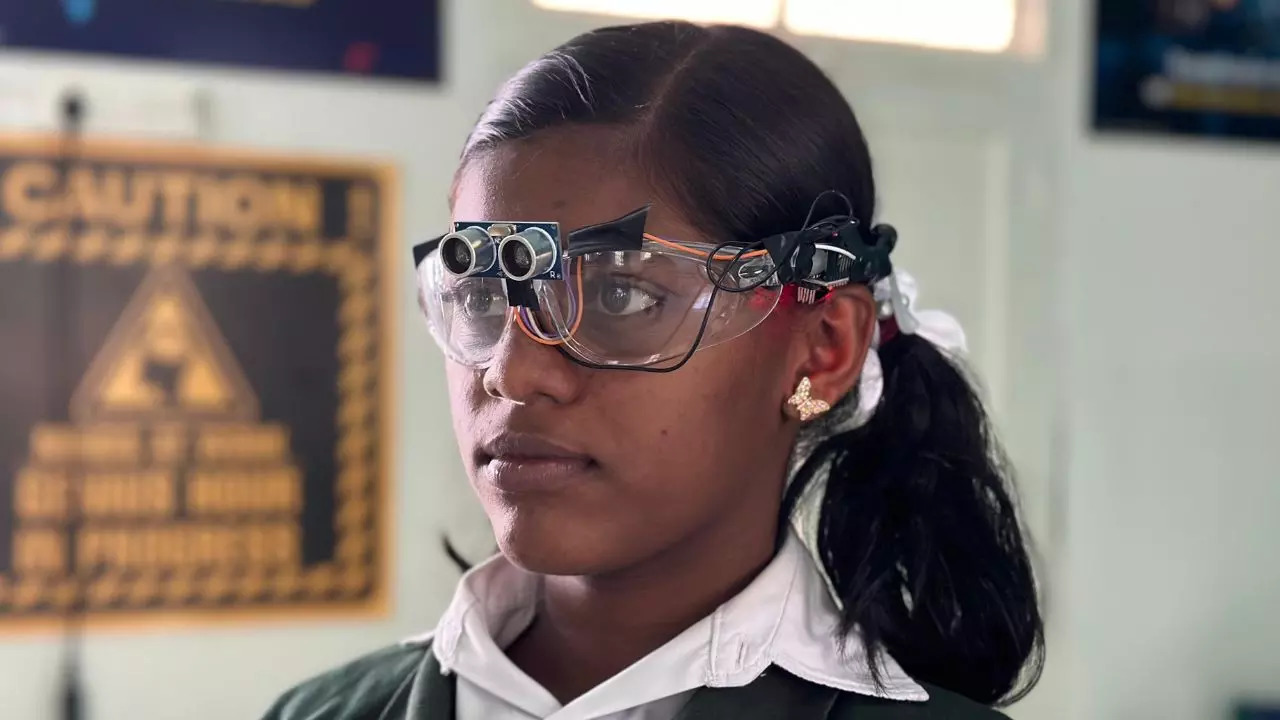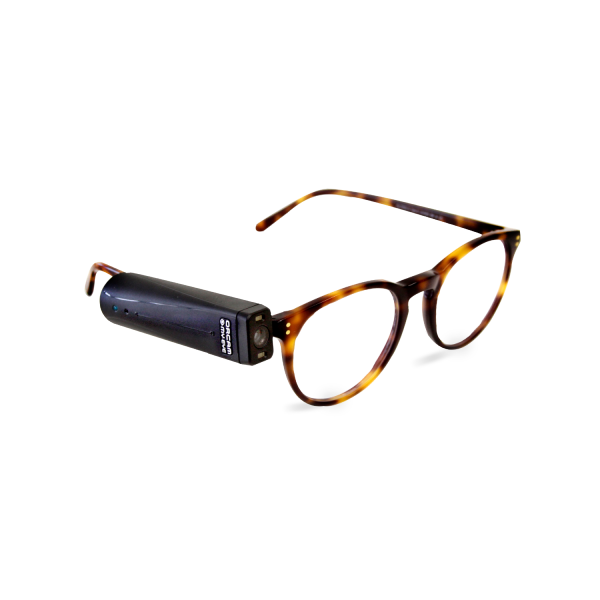The Future of Assistive Technology for the Blind: Empowering Independence
The Future of Assistive Technology for the Blind: Empowering Independence
Blog Article
Empowering Self-reliance With Assistive Technology for the Blind
The integration of assistive innovation for individuals that are aesthetically impaired or blind stands for a considerable advancement in promoting independence and boosting quality of life. With a range of devices-- from display viewers to ingenious responsive tools-- these innovations not only assist in navigating and communication yet also advertise social incorporation and involvement in numerous aspects of life.
Recognizing Assistive Innovation
Although assistive technology has actually developed considerably for many years, its essential objective remains the very same: to boost the lifestyle for people with disabilities, especially those that are blind or aesthetically impaired. This innovation incorporates a broad variety of tools and gadgets that help with self-reliance and functionality in everyday tasks.
Assistive technology can be classified right into low-tech and high-tech services, each designed to fulfill particular demands. State-of-the-art devices usually include software program applications, specialized hardware, and adaptive tools that use innovative technology to give support in different contexts. Alternatively, low-tech remedies might include daily products that are customized to enhance availability, such as magnifiers or responsive markers.
The combination of assistive innovation into the lives of individuals who are blind or aesthetically harmed not only promotes autonomy but likewise fosters social inclusion and involvement in academic and expert settings. By leveraging these modern technologies, customers can navigate their surroundings, access details, and interact efficiently, thereby boosting their total top quality of life. Comprehending assistive innovation is important for professionals, caretakers, and supporters that aim to sustain people in maximizing their potential and attaining higher freedom.
Types of Assistive Gadgets
Assistive tools for the aesthetically impaired and blind are crucial devices that boost daily obeying attending to details challenges encountered by individuals. These devices can be extensively categorized right into three primary kinds: optical devices, digital tools, and sensory gadgets.

Sensory devices, such as Braille display screens and tactile maps, give alternate ways to get information. Braille shows transform digital message right into Braille, allowing users to check out touch. Tactile maps use spatial understanding through increased structures and lines, permitting much better ecological awareness.
Together, these assistive gadgets encourage individuals with visual problems to engage more completely with their environments, promoting higher freedom and confidence in everyday tasks.

Influence On Life
The combination of assistive modern technology into the day-to-days live of people who are visually impaired or blind dramatically enhances their capability to browse and connect with the world around them. Tools such as display viewers, Braille presents, and mobile applications facilitate access to information, enabling customers to involve with electronic web content, connect efficiently, and manage daily tasks independently.
Additionally, innovations like wise glasses and navigation apps offer real-time support in unknown settings, enhancing flexibility and self-confidence. These devices allow individuals to recognize barriers, reviewed indicators, and also identify faces, therefore promoting a sense of freedom in public areas. Furthermore, home automation systems, which can be managed with voice commands, enable people to straight from the source manage their living atmospheres much more efficiently, enhancing comfort and security.
The influence of assistive modern technology expands past sensible jobs; it advertises social addition and psychological wellness. By connecting the space between people and their environments, these innovations empower customers to get involved completely in community tasks, pursue educational possibilities, and involve in purposeful partnerships. Eventually, the development of assistive technology is crucial in redefining the possibilities for people who are aesthetically impaired or blind, leading to a more easily accessible and inclusive culture.
Success Stories and Testimonials

An additional effective testimonial comes from Mark, a current university grad who used display analysis software throughout his academic journey. This modern technology allowed him to gain access to program products and take part in discussions, eventually resulting in his successful transition into the labor force. Mark credit scores assistive technology for equipping him to accomplish his occupation goals, emphasizing its role in leveling the playing field for individuals with visual impairments.
Furthermore, neighborhood centers have reported enhanced involvement in their programs thanks to the introduction of available digital platforms. These systems have actually made it less complicated for people to attach, share sources, and assistance each other. These success tales jointly highlight the profound effect of assistive technology in fostering independence, boosting top quality of life, and damaging down barriers for the blind and visually damaged community.
Future Trends in Assistive Technology
Arising innovations are poised to change the landscape of assistive technology for individuals who are visually damaged or blind. Innovations in artificial knowledge (AI) and artificial intelligence are improving the abilities of devices, making it possible for even more intuitive customer experiences. AI-driven applications are significantly able to check out and recognize things text out loud in real-time, supplying users with beneficial info about their environments.
Additionally, developments in wearable modern technology are creating new chances for freedom. Smart glasses equipped with augmented truth attributes can overlay critical information onto the individual's area of vision, facilitating navigation and interaction with the atmosphere. Moreover, the assimilation of Net of Points (IoT) devices is streamlining ease of access in wise homes, enabling individuals to manage devices and obtain alerts via voice commands or responsive user interfaces.
The development of braille display screens and responsive responses systems is additionally growing, advertising accessibility to electronic material and improving communication. As these technologies proceed to advance, they assure to improve everyday living, educational opportunities, and work leads for individuals with visual disabilities. Constant cooperation between technologists, users, and campaigning for teams will be important in ensuring these innovations fulfill the requirements of the community properly.
Final Thought
To conclude, assistive technology plays a crucial function in enhancing the self-reliance of individuals that are visually damaged or blind. By supplying important devices and resources, these technologies assist in improved navigating, communication, and accessibility to information, therefore fostering freedom visit this web-site and confidence. The transformative influence of assistive devices not only advertises effective interaction with the setting but likewise urges social inclusion and involvement in numerous aspects laser eye care of life, eventually encouraging users to prosper within their areas.
The integration of assistive modern technology for individuals who are visually damaged or blind stands for a considerable innovation in fostering independence and improving top quality of life.The integration of assistive innovation right into the lives of people who are blind or visually impaired not just promotes freedom yet also fosters social addition and involvement in specialist and educational environments. Ultimately, the development of assistive innovation is critical in redefining the opportunities for people that are blind or aesthetically damaged, leading to an extra obtainable and inclusive society.
Lots of individuals who are visually damaged or blind have actually shared inspiring success tales that highlight the transformative influence of assistive innovation on their lives.In final thought, assistive innovation plays an essential function in enhancing the independence of people that are blind or aesthetically impaired.
Report this page